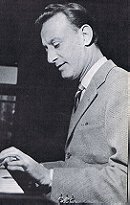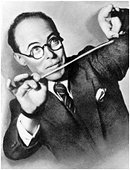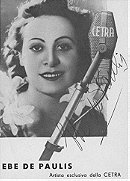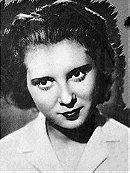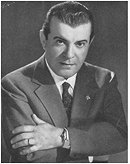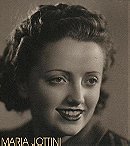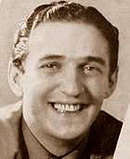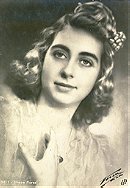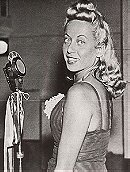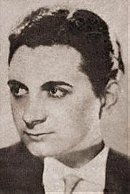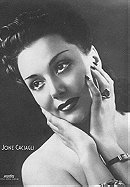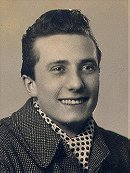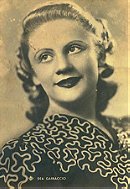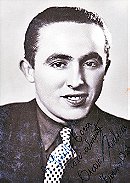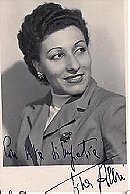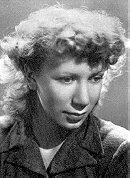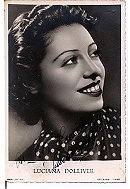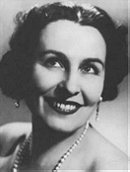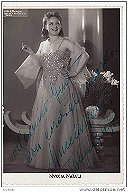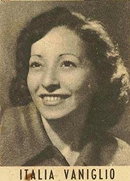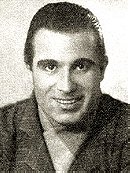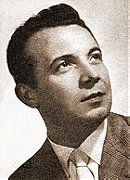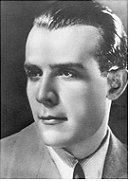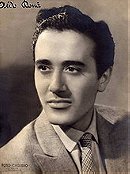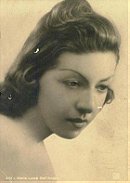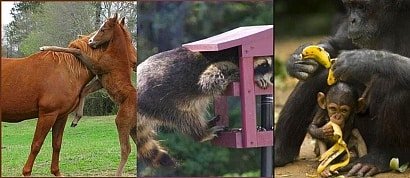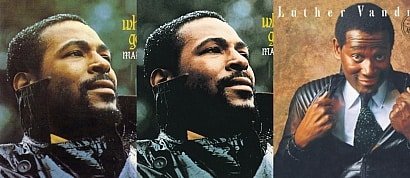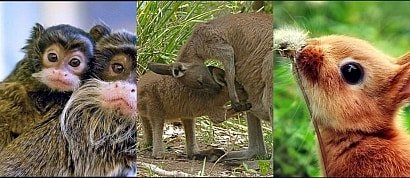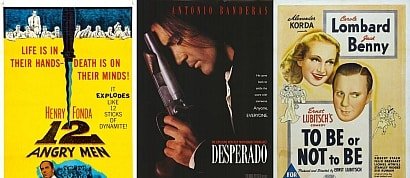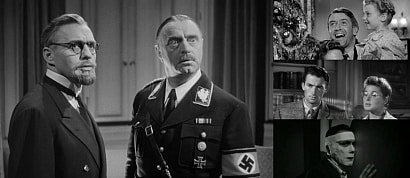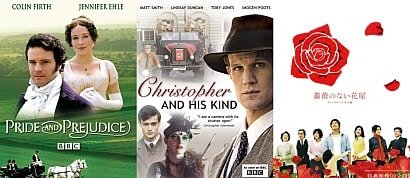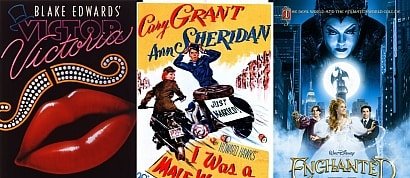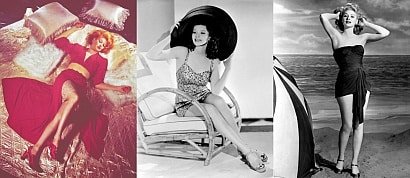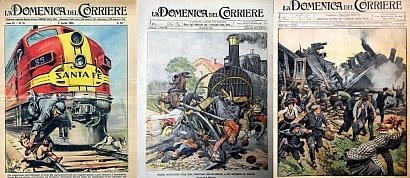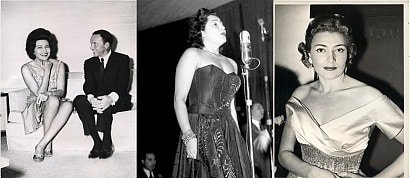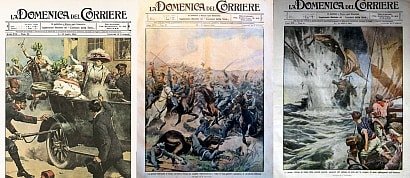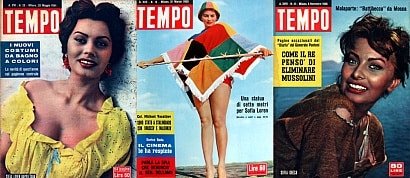Late 1930s/Early 1940s Italian Radio
Sort by:
Showing 36 items
Rating:
List Type:

Italian crooner and movie actor Alberto Rabagliati was the most popular singer in the late 1930s and in the early 1940s. His career started in 1927 as the winner of a contest for impersonator of Rodolfo Valentino. He spent a period in the U.S.A., where he starred in a movie. Back to Italy, he became a singer in night clubs and then in EIAR.

In the ad: Every Mondays 9:40pm to 10.00pm - Listen to the radio broadcasting organized by Ente Nazionale Industrie Cinematografiche E.N.I.C. (National Agency of Movie Companies) - Canta Rabagliati.
Because of his huge success, in 1941 Alberto Rabagliati had a his own radio show called Canta Rabagliati (Rabagliati sings), broadcasted every Monday evening on prime time.

Alberto Rabagliati also starred in many movies in the 1940s and in the 1950s.

Movie poster for Carlo Ludovico Bragaglia's La Scuola Dei Timidi (1941) a comedy starring Alberto Rabagliati and Carla Del Poggio.

Alberto Rabagliati with conductor Pippo Barzizza and Orchestra Cetra, Ba-ba-baciami Piccina (Ki-ki-kiss me baby), 1940.
Ba-ba-baciami Piccina is considered as the most popular Italian song of the 1940s.
Rosemary Clooney's cover Botch-A-Me, 1952.
Alberto Rabagliati sings the self-ironic song Quando Canta Rabagliati (When Rabagliati sings), 1941.

Italian classic vocal pop group Trio Lescano. From the left: Alexandrina Eveline Leschan (aka Alessandra Lescano), Judik Leschan (aka Giuditta Lescano), Catharina Matjf Leschan (aka Caterinetta Lescano). The Leschan sisters were Dutch-Hungarian born and naturalized Italian. Trio Lescano was the most popular Italian vocal pop group in the late 1930s and in the early 1940s.

Trio Lescano on stage.

Trio Lescano in 1942.

Cover of the songbook of Trio Lescano's Tulipan, Italian edition of Andrews Sisters' Tu-Li-Tulip Time.
Trio Lescano, Tulipan, 1940.
Trio Lescano, Camminando Sotto La Pioggia (Walking in the rain), 1941.

Nunzio Filogamo is the one of most popular radio presenters in history of Italian radio. He also belonged to the experts' panel that chose the EIAR radio singers. The success of Nunzio Filogamo lasted until the early 1960s. He presented the Sanremo's Italian Song Festival in 1951 (the first edition), 1952, 1953, 1954 and 1957.

Nunzio Filogamo played the role of Aramis in the parodistic radio comedy series I Quattro Moschettieri (The four musketeers), based on Alexandre Dumas' novel. I Quattro Moschettieri was broadcasted from 1934 to 1937 and it was the most successful radio programme of the 1930s in Italy. Nunzio Filogamo directed the last episodes in 1937.
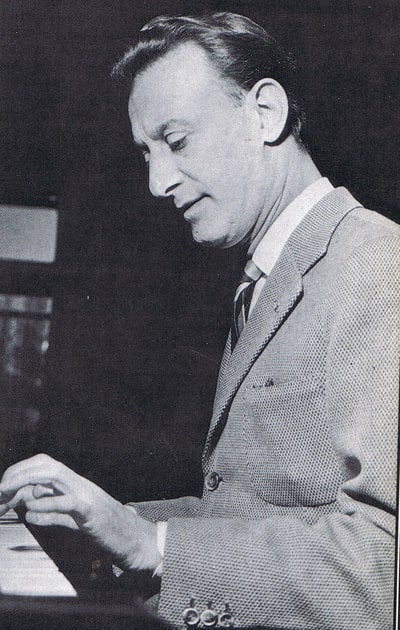
Nunzio Filogamo was also a singer, with a series of revue-style ironic songs.
Nunzio Filogamo, Mi Chiamo Viscardo (My name is Viscardo), 1938.

Italian bandleader and composer Pippo Barzizza. He was the most popular Italian swing bandleader from the 1930s to the 1950s, authors of many soundtracks (mainly of comedies and of comic movies) and collaborator of the Italian national radio broadcaster (both as EIAR and as RAI).
Pippo Barzizza was the father of 1940s and 1950s revue and comedy star Isa Barzizza.

Pippo Barzizza and his Orchestra.
Pippo Barzizza and his Orchestra, Marilena, 1942.

Italian classic vocal pop singer Ebe De Paulis was known as the Diva della Radio (Radio diva).
Ebe De Paulis, Ti Parlerò D'Amor (I'll tell you about love), 1944.

Italian classic vocal pop singer and comedy actress Chiaretti Gelli was one of the most beloved singers in the early 1940s.

Movie poster for Raffaello Matarazzo's Il Birichino di Papà (Daddy's rascal, 1943), a comedy starring Chiaretta Gelli.
Chiaretta Gelli, La Canzone Del Calesse (The gig song), 1943.

Italian crooner Gilberto Mazzi had a huge success in 1939 with the song Mille Lire Al Mese (1000 liras per month), one one the most popular Italian songs of the 1930s.

Movie poster for Max Neufeld's Mille Lire Al Mese (1939) a comedy starring Alida Valli and Umberto Melnati.

Cover of the songbook of Gilberto Mazzi's Mille Lire Al Mese referring to the movie.
Gilberto Mazzi sings Mille Lire Al Mese, 1939.

Italian bandleader Cinico Angelini was one of the most influential conductors and arrangers of the 1940s and, above all, of the 1950s.
Cinico Angelini and his Orchestra, Ritmando Un Ricordo (Keeping a memory in rhythm, Italian title of Jimmy McHugh and Dorothy Fields' Exactly Like You, instrumental version), 1941.

Italian classic vocal pop singer Maria Jottini (or Jattini).

Italian crooner Gilberto Mazzi and Maria Jottini in Giacomo Gentilomo's Ecco La Radio! (Here is the radio!, 1940).
Maria Jottini and Trio Lescano, Maramao Perchè Sei Morto (Maramao why did you die), 1939.
Maramao is a fictional cat protagonist of a popular rhyme.

Italian crooner Carlo Moreno.

Gino Boccasile's cover for the songbook of Signorina Grandi Firme.
Carlo Moreno and Trio Lescano with Pippo Barzizza and Orchestra Cetra, Signorina Grandi Firme, 1938.

Italian classic vocal pop singer Silvana Fioresi.
Silvana Fioresi and Trio Lescano with Pippo Barzizza and Orchestra Cetra, Pippo Non Lo Sa (Pippo doesn't know it), 1940.
Pippo Non Lo Sa is a comic song about a fictional eccentric fellow.
Silvana Fioresi and Trio Lescano, Il Pinguino Innamorato (The penguin in love), 1940.

Italian classic vocal pop singer Lina Termini.
Lina Termini with Cinico Angelini and his Orchestra, Ma L'Amore No (But not the love), 1942.

Italian crooner Enzo Aita.

Cover of the songbook of Ma Le Gambe (But the legs), 1938 smash hit sung by Enzo Aita and Trio Lescano.
Enzo Aita and Trio Lescano with Pippo Barzizza and Orchestra Cetra, Ma Le Gambe, 1938.

Italian classic vocal pop singer Norma Bruni.
Norma Bruni and Trio Lescano with Pippo Barzizza and Orchestra Cetra, La Canzone Del Platano (The plane tree song), 1940.

Italian opera singer (tenor) Tito Schipa was popular also as a pop singer and as an actor. Among his hits, there was Vivere (To live, 1938) on of the most popular Italian songs of the 1930s.

Movie poster for Guido Brignone's Vivere (To live, 1938) a musical drama starring Tito Schipa and Caterina Boratto.

Italian classic vocal pop singer Jone Caciagli.
Jone Caciagli, C'Era Un Sentiero Nel Bosco (There was a path in the wood), 1943.

Italian classic vocal pop group Trio Primavera (Spring Trio), from the left: Isa Bellini, Wilma Mangini and Thea Prandi.

Movie poster for Amleto Palermi's Totò Allegro Fantasma (Totò merry ghost, 1941), a comedy starring Italian revue and comedy star Antonio De Curtis (aka Totò) and Trio Primavera.
Trio Primavera, Canteremo Una Canzone (We'll sing a song), 1941

Italian classical music conductor Cesare Gallino (centre) with Italian opera singers Sesto Bruscantini (bass) and Lina Pagliughi (soprano).

Italian classical music conductor Tito Petralia was the artistic director of EIAR. He was also the head of the experts' panel that chose the radio singers.
Among his students there was 1950s and 1960s crooner Claudio Villa, one of the all-time most successful Italian singers.

Italian classic vocal pop singer Lucia Mannucci in 1942.
In 1947 she joined the vocal pop group Quartetto Cetra.

Italian opera singer (soprano) Nuccia Natali was also a singer of swing, jazz and classic vocal pop songs.

EIAR - Ente Italiano per le Audizioni Radiofoniche (Italian Agency for
Radiophonic Listenings) was the name of
the Italian national broadcaster from 8th January 1928.
The previous name was URI - Unione Radiofonica Italiana (Italian Radiophonic Union), from 6th October 1924, the very first day of national radio broadcasting in Italy.
The name EIAR was changed in RAI - Radio Audizioni Italiane (Italian Radio Listenings) on 26th October 1944.

Giacomo Gentilomo's Ecco La Radio! (Here is the radio!, 1940) is a comedy about an ordinary day in the EIAR studios. It featured many singers, presenters and conductors of those years.
See also:

Late 1940s/Early 1950s Italian Radio

Late 1930s/Early 1940s Italian Decò
Comedies
Added to
People who voted for this also voted for
Anautix' Music Lists
Animal Candids 3
Anautix' favorite Soul, R&B
My Pictures In Listal
Animal Candids 4 (The Cute Factor)
Watched in 2012
Glass Houses
Anautix' favourite Intros of TV-Series
'40 movies
Watched in 2012 (TV)
Animal World, Part 4 (I Can Help!)
ZZ Top Remixed!
Watched in 2011
Icevipers "The Animals", Assorted Lists
My places list
Lucille Ball's Pictorial
Actresses And Models_15_1930s, 1940s, 1950s, 1960s
"La Domenica del Corriere"_9
Late 1940s/Early 1950s Italian Radio
"La Domenica del Corriere"_World War I
Sandra Dee's Pictorial_4
"Tempo"_6 (Italian Magazine)
 Login
Login

 10
10
 0
0

